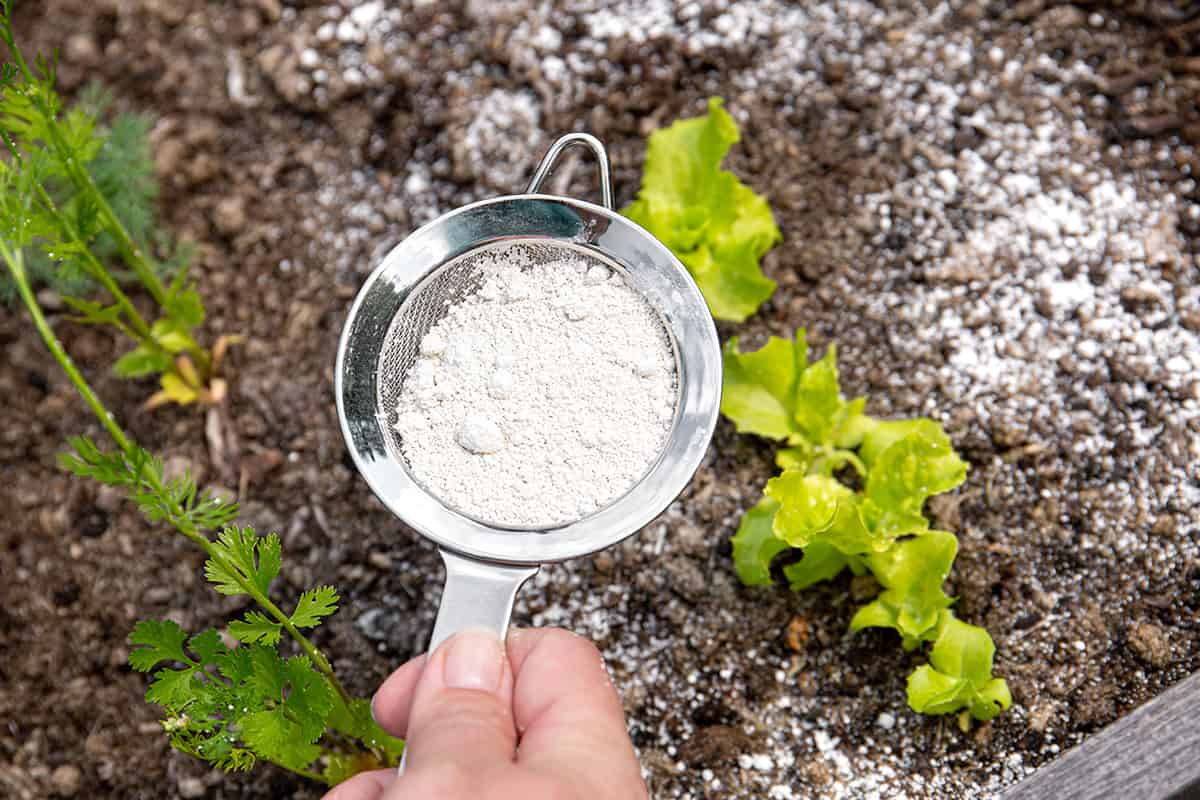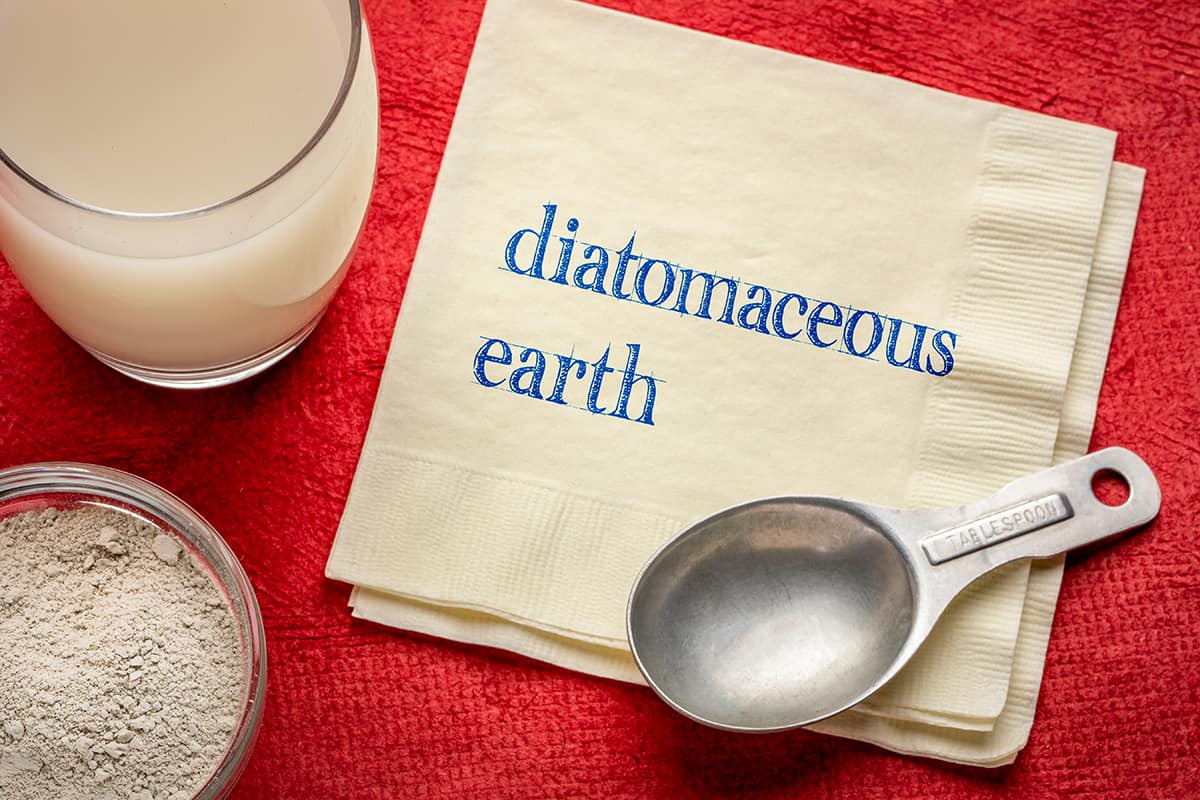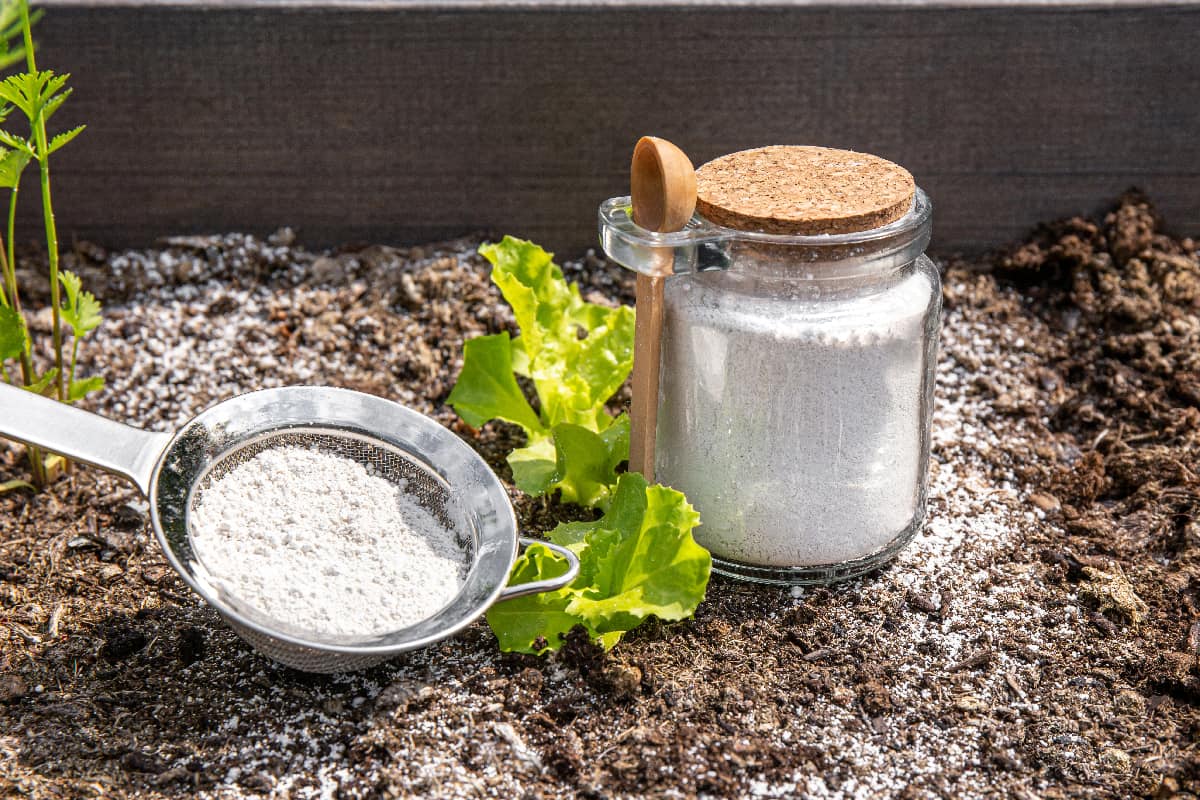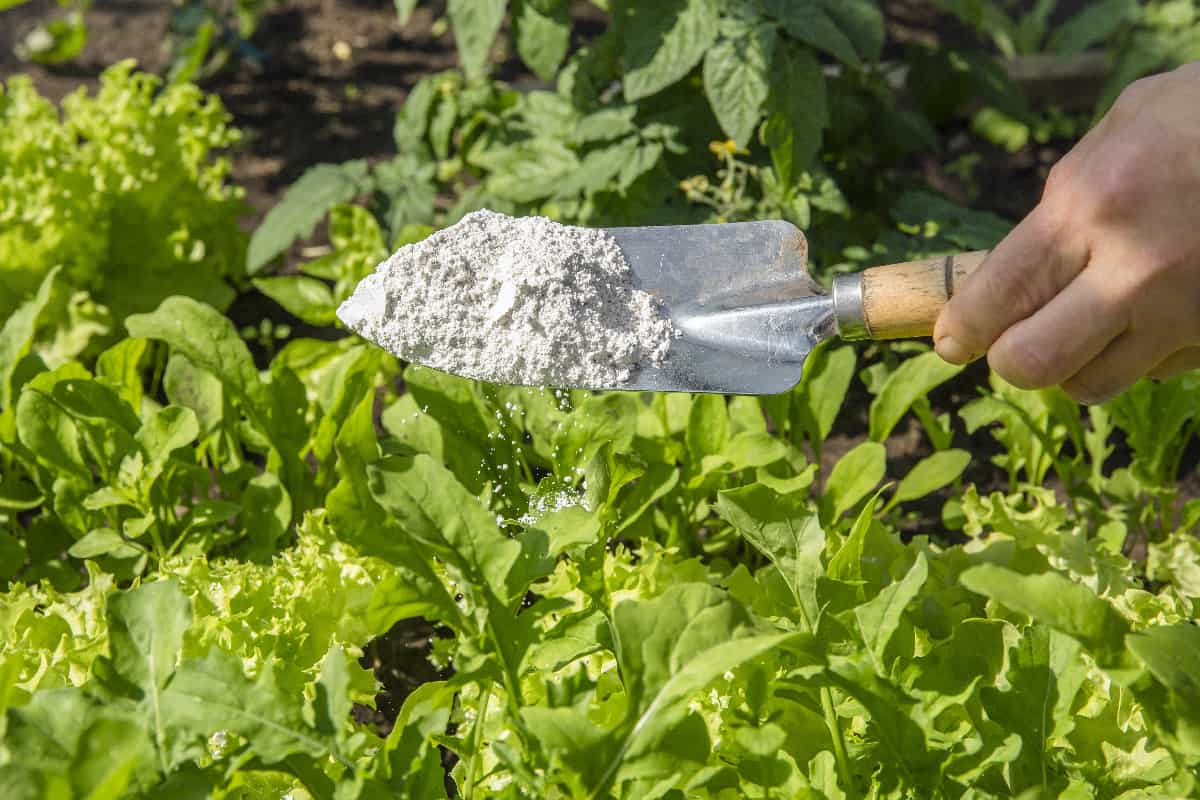Keeping your garden lush and healthy is easy when you know your gardening basics. A good example is learning about Diatomaceous Earth (DE) and how it can help your garden. To help make the most out of using DE, we have put together helpful information for you.
It's best to use Diatomaceous Earth in summer, starting from July. This is when pests are their most active.
You can apply Diatomaceous Earth powder either dry or wet. If using dry, it is good to apply the dust when the plants are a little wet. This can either be after a light rain or very early morning because of the dewy vegetation. For wet application, mix the DE powder with water and spray on the affected plants and soil.
In this article, you will read more about the Diatomaceous Earth application and how to take advantage of it. If you are interested to learn more about DE, then keep scrolling!
![Gardener applies diatomaceous earth powder to the garden, When To Apply Diatomaceous Earth [And How To]?](https://gardentabs.com/wp-content/uploads/2022/08/When-To-Apply-Diatomaceous-Earth-And-How-To-e1662025320101.png)
What Is The Best Way To Apply DE
To ready your garden for the summertime, you should start applying Diatomaceous Earth in July. This will help prevent excessive damage from plant-eating insects. There are two ways by which you can apply DE.
Dry application

Apply DE dust when your garden has some moisture on its foliage. That way the dust will stick to the vegetation. You can apply it using a sieve or, for a more concentrated application, use a powder applicator.
Check out this powder applicator on Amazon.
If you see an insect or know where it lives, cover the insect or its path with powder. Keep in mind that this abrasive substance can irritate your airway and dry your skin. When handling DE powder, make sure to wear protective gear like a mask and gloves.
Another thing to remember when you apply DE powder is that the dust can spread in the air. Because of this, keep children and pets out of the garden until the dust has settled.
Wet application

You can also mix the DE powder with water. This effectively spreads the powder without it going airborne. Follow these simple guides for mixing DE powder:
- Mix 1 cup of DE powder with 2L of water or 2 cups per 1 gallon of water
- Spray the mixture on plants and soil
- If the DE settles, stir to keep the powder mixed well.
See this 1-gallon sprayer on Amazon.
However, some say that mixing DE with water makes it less effective than applying the powder in dry form. After all, you will have to wait for 2-3 hours for the water to completely evaporate. So, why not intentionally wet the plants and then apply the DE powder? Now, that is an idea!
Spray then sprinkle
Since the DE powder adheres best when foliage is wet, spraying first and then sprinkling the powder only makes sense. To increase the effectiveness of killing unwelcomed insects, you can also add a little dishwashing detergent to the mix. The following are the dilution percentages when mixing detergent and water:
1% dilution
At 1% dilution, soft-bodied pests may be affected. To achieve 1% dilution, mix 2 1/2 tbsp. detergent with 1-gallon water. For smaller applications, you can mix 1tsp. detergent with 1-pint water.
2% dilution
This dilution is said to kill insects without damaging plants. In a gallon of water, mix 5 tbsp. detergent or 2tsp. dishwashing detergent in 1-pint water.
3% dilution
Sensitive plants may have an undesired reaction towards 3% dilution. Before spraying, it is advisable to test on a plant leaf first. For this, you mix 8 tbsp. of detergent in a gallon of water. For a pint of water, mix 1 tbsp. detergent.
4% dilution
If you wish to go for the highest dilution, go for 4%. For this mixture, 10 tbsp. is mixed with a gallon of water, or 4 tsp. in every pint of water.
Note that diluting dishwashing liquid with water can potentially harm your plants. The higher the dilution, the greater the harm.
How Long Until DE Takes Effect

Diatomaceous Earth is naturally-occurring. Compared to synthetic pesticides, DE is less toxic to humans. But, it also means that it may take a while before results can be seen in pest control.
DE is said to be especially effective in insects with hard exoskeletons, and also works on small soft-bodied ones. According to R. Hoover, DE can kill insects between 4 to 12 hours. Although, it might take longer to eradicate a full-blown infestation.
For DE to be effective, a religious application may be needed depending on the target organism. Take note of the 10 most destructive garden pests and their incubation period:
| Pests | Incubation period |
| Aphids | 7-8 days |
| Cabbage Maggot | 2 days |
| Squash and Stink Bugs | 10 days |
| Cutworms | 2-14 days |
| Colorado Potato Beetle | 28-35 days |
| Mexican Bean Beetle | 14-21 days |
| Flea Beetle | 12 days |
| Tarnished Plant Bugs | 4-8 days |
| Japanese Beetles | 7-14 days |
| Scales | 7-21 days |
To effectively decrease the population of these pests, reapply DE powder every 2-3 days within the incubation time frame.
Is DE Safe For Indoor Use
For those who want to keep their gardens indoors, DE is just as safe to use. It is as effective with indoor pests as it is with garden pests. You can use it to kill bed bugs and even control the flea population in your house pets. It can even be used as a deodorizer and as a filtration agent in pools.
DE powder used in pool filters has crystalline silica. This form is very dangerous when inhaled. Therefore, it should never be used in households or garden applications.
DE powder can be used in a variety of ways. But, we have to be careful when buying the DE powder since what we want in our household is the food-grade variety. To make certain that you are buying food-grade Diatomaceous Earth, check the label before purchasing.
Click here to see this food-grade DE powder on Amazon.
How To Protect Beneficial Insects
DE is an effective pesticide but since it does not discriminate against its targets, any insect that comes in contact with it can be harmed. This includes plant beneficial insects, like bees. To help protect beneficial insects, here are some steps you can take:
- Do not apply DE powder on flowers and the area immediately surrounding them.
- Apply on stems and leaves where bees do not crawl on.
- If a bee finds itself walking on areas with DE dust, immediately spray the area with water.
- Apply DE powder when pollinating insects are less active. That is either early in the morning or late afternoon.
- Apart from bees, other good insects might be affected, like ladybugs, mantis, and spiders. To prevent them from walking on dusted crops, you can apply a plant cover after the powder has settled.
Check out this plant cover on Amazon.
In choosing plant covers, it is best to make sure that it still lets light and rain through so that the plants do not suffer.
What Other Use Of DE In Gardening
Apart from being a non-toxic pesticide, DE can also be used as a soil conditioner. The food grade variant is chemically safe, moisture retentive, and highly porous. Here we further explain what impacts these qualities have on your plants.
Improved plant health

DE is comprised of different essential minerals. Its major components are silicon oxide (80%-90%), aloxide (2%-4%), and iron oxide (0.5%-2%). Other traces of soil-enriching minerals, such as magnesium, potassium, phosphorus, and calcium, are also found in Diatomaceous Earth. The recommended ratio to condition soil is 2 parts DE powder to four parts soil.
Moisture retention
The DE-soil mix is ideal for potted plants. Not only does it provide the minerals needed, but DE also has good water retention properties. This means that with relatively little water, your potting mix will be able to keep itself moist for longer periods. This soil quality helps make your plant drought resilient.
Good oxygen flow
The highly porous nature of DE allows it to effectively drain excess water. The hollow structure of fossilized diatoms also allows oxygen to enter the soil, and the plants to breathe. Thus, freshwater diatomite makes a good alternative substrate in hydroponics.
You might also want to read about 5 Best Types Of Soil For Bonsai Trees
The Bottom Line

DE is a versatile material that is used for health to household consumption. In gardening, DE makes a great pest control medium. The fact that it is abundantly available in nature makes it an inexpensive and eco-friendly option. Aside from that, it also helps boost vegetation health and yield. Learning how and when to apply it holds many advantages for you.
If you found this article helpful, you may want to check out these great posts:
What Is Eating My Baby Cucumbers [And How To Prevent It]?
What Is Eating My Bleeding Heart Plant [And How To Prevent It]?




